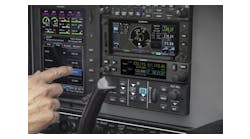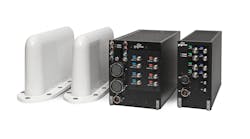A phrase familiar to software people goes like this: Garbage in equals garbage out (GIGO). This means that if the input data or the software itself was bad then the output of the program will be incorrect. If you haven’t already freaked out thinking this is an article about software, you might be wondering how this applies to the automatic flight control system (AFCS) in your aircraft, especially if it’s an older analog system that has no software.
In reality, GIGO applies to many things beyond computers, including life, but we’ll limit this discussion to AFCS problems.
When we’re talking about automatic flight control systems we’re talking about autopilots (APs), which provide stabilization and hands-off flight control, and flight directors (FDs), which provide navigation steering commands to the flight instruments and can usually be coupled into the autopilot for fully automatic flight path control.
To do the job properly all automatic flight control systems rely on various line replaceable units (LRUs), from the flight control computer (FCC) itself to the sensors that supply the input data. Gyros, AHRS, air data sensors/computers, accelerometers, servo position devices, navigation radios, and other LRUs provide specific inputs to drive the various functions of the system. Therefore if a particular function of the system isn’t working, many AMTs’ typical courses of action is to first replace the flight control computer (though this might be premature). If the new computer doesn’t solve the problem, then it’s time to look at the particular sensor(s) that feed that particular function and replace that LRU also. While this procedure may solve the problem, there will be a time, sooner or later, when you run out of boxes to replace and now you’re faced with having to dig deeper to find the true cause. What do you do now?
If the problem isn’t the LRUs then you would rightfully suspect it’s probably somewhere in the appropriate wiring. So you get out your wiring diagrams and multimeter, and start ringing out the wires, checking for continuity, short circuits to other wires and short circuits to the airframe, and find nothing wrong. Now what?
Powers and Grounds
Something that gets overlooked many times, are the various (and numerous) powers and grounds that avionics require to make everything work properly. This is where GIGO still applies because if the power is garbage going into a device, the output of the device (regardless of what it is) will most likely be garbage coming out. Some of the most familiar power problems include AP drop-offs, sloppy (loose) AP and/or FD performance, nuisance error codes, and more.
Regardless of vintage, avionics require voltage, current, and frequency (for AC systems) that is clean (noise-free) and stable (though it tends to be even more important for today’s digital avionics).
Good grounds are essential to proper performance so don’t forget about them. Many times if you’re having strange problems that you can’t seem to fix, it usually ends up being a bad ground. Many times when I’m providing troubleshooting assistance I’ll ask the mechanic to find and clean the appropriate ground blocks. It doesn’t always solve the problem but it certainly couldn’t hurt.
Aircraft Power Comes First
Power on the aircraft comes from sources such as batteries, generators, or alternators. Depending on the equipment installed in the aircraft, there may be additional devices such as inverters, transformers, and rectifiers to provide suitable power to the avionics and other systems. When a number of different aircraft systems are having problems, it is likely that something is wrong with the main aircraft power which, if you’re lucky, may be visible in the cockpit on the voltmeters, ammeters, or caution/advisory panel. If you suspect power problems check the aircraft sources first to make sure they are working properly. This includes communicating with the flight crews to find out if they’ve seen anything unusual. If you’re satisfied that the aircraft power system is good then go further downstream.
Internal Avionics Power Supplies
While an avionics system may use 28v DC from the aircraft bus, it may not be obvious that many LRUs contain internal power supplies that tailor the incoming aircraft power to meet their own requirements. For example, electronic devices in a computer are operated typically at a regulated 5v DC, though 10v DC and 15v DC are also quite common. These voltages are all produced in the internal power supply.
When troubleshooting on any avionics system don’t overlook the possibility that a power supply in one LRU is used to drive peripheral devices (sensors). In a typical AFCS, the FCC internal power supply will provide power for controllers, mode selectors, stick position sensors, air data sensors, accelerometers, barometric altimeter potentiometers, and other equipment, all of which can affect performance.
Power Supply Monitors
When an autopilot drops off, it does so for a reason. Autopilots contain monitors that constantly track what’s going on and, if a fault is detected, typically will simultaneously disengage the AP and annunciate the failure to the crew before the aircraft enters into an unsafe condition (such as an autopilot hardover). Flight directors use monitors too, and, depending on the specific monitor, the FD may bias the command bars out of view and, in some systems, disengage a mode or modes.
Older analog systems have a relatively small number of hardware monitors, whereas digital systems may have hundreds looking at hardware and software parameters.
One of the monitors commonly found in either system is the power supply monitor. This monitor looks at the incoming power from the aircraft to make sure it’s within limits. For LRUs that output power to external devices, the power supply monitor also keeps tabs on the load being placed on the power supply. All power supplies have limitations.
They can only output so much current, and when they get overloaded the output is affected. If the power supply is overloaded sufficiently the monitor will trip and off goes the AP (or whatever the monitor controls). A problem like this may actually be easier to diagnose vs. one where the power supply is close to, but just short of, tripping the monitor.
OK, so why not tighten up the monitor? Very simply, to prevent excessive nuisance trips. Loosening up the monitor too much defeats its purpose, which is safety of flight.
Garbage Out Equals Garbage in Equals Garbage Out
Let’s consider a situation where the pilot reports an altitude hold drift problem. You’ve checked the pitot-static system thoroughly, replaced the FCC, replaced the air data unit, and done a host of other things but still haven’t found the root cause.
You look at the system manual and discover that part of the air data unit receives power from the FCC. But you replaced the FCC and the air data already so it must not be the boxes (unless you installed another defective box, which never happens). You ponder this and then it hits you that a number of other LRUs share this same power. Checking the voltage at the air data unit and a number of other places shows that, sure enough, the voltage is a bit lower than it should be. Unplugging some of the other devices brings the voltage back up to specs so you know you’re probably dealing with an overload situation and you’re left with having to figure out what’s causing it. It could be one of the components you disconnected or it could be a short in the wiring. It could also be a newly installed item that caused the overload, so determine if anything has been done to the aircraft, which may have inadvertently created the problem.
This is an example of a situation where something external affected the FCC power supply output, which was driving the electronics in the air data unit. The air data unit, in turn, provided corrupted altitude data to the flight director. The result: an unstable altitude signal that the flight director chases through the autopilot producing a drift off altitude. This is only one example, and there are a great many more.
So the next time you can’t solve the problem by replacing the things that you can physically see and touch, consider those things you can’t. And remember, the performance out of any system is only as good as what goes into it.



